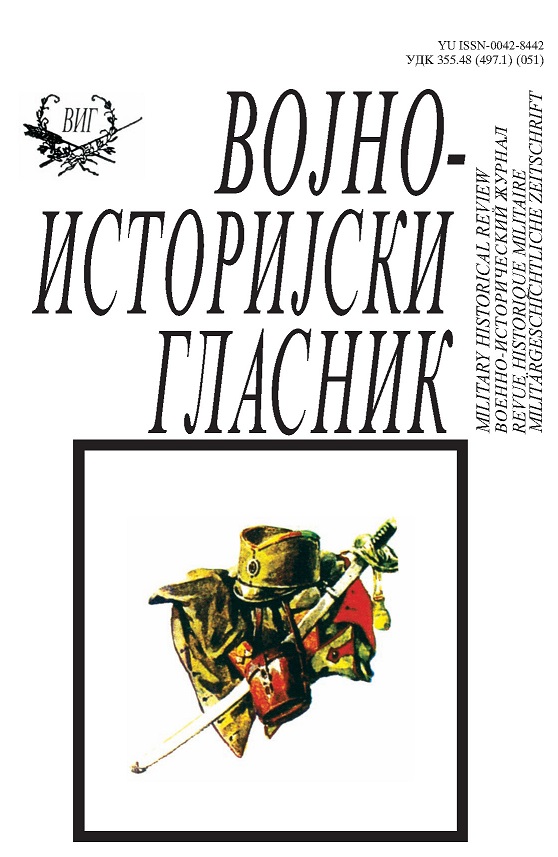Сузбијање качака на Косову и Метохији 1912–1929
“Reining in” of Kačak Movement in Kosovo and Metohija between 1912–1929
Author(s): Vladan Z. JovanovićSubject(s): Civil Society, Military history, Political history, Pre-WW I & WW I (1900 -1919), Interwar Period (1920 - 1939), Inter-Ethnic Relations, Peace and Conflict Studies
Published by: Institut za strategijska istraživanja
Keywords: Kačak movement; Kosovo and Metohija; 1912-1929; Yugoslavia; territorial issues; Kosovo Albanians;
Summary/Abstract: Spreading of the Kačak movement in Kosovo, Metohija and western Macedonia in the first decades of the Yugoslav state was primarily result of the unsolved territorial issues after the period of wars between 1912 and 1918. The Albanian insurgency against the Turkish rule had meanwhile evolved into a powerful instrument of the Austro-Hungarian, Italian, Albanian and Bulgarian policy in the Balkans. The culmination of armed incursions from Albania (1918–1924) took place in an extremely difficult moment for the authority of the newly formed Kingdom of the Serbs, Croats and Slovenes. Being caught between the legal transitional period it was going through, ethnic tensions in the northwest and heavy fighting with Bulgarian Komitas in the southeast of the country, the Yugoslav state took up tackling the Kačak issue in a quite inapt manner. The situation was aggravated by the anarchy in the aftermath of the war, „innate fright of authorities“, the open border with Albania, the unconsolidated state apparatus, and synchronic activities of the Kačak and Komita movements. However, the Kačaks were partly subdued in 1924 under the circumstances which luckily coincided both at home and abroad (restoration of the Zogu’s regime and normalisation of the Yugoslav-Albanian relations, the assassination of the Kačak leader in Drenica Azem Bejt, the amnesty granted by the Davidovic’s government, etc.). Although the movement lost its vigour and strength, and their ideologist left the country, the problem eventually turned to have been merely postponed. The failure to eradicate the Albanian insurgency may be explained in the light of the wide-spread tribal solidarity among Kosovo’s Albanians, the power of the ideas on Greater Albania, and political trade of surviving landowners (beys) oligarchy with the Radical Party leaders, which eventually led to the outbreak of Albanian irredentism shortly before the World War II.
Journal: Vojnoistorijski glasnik
- Issue Year: 2009
- Issue No: 1
- Page Range: 32-55
- Page Count: 24
- Language: Serbian

